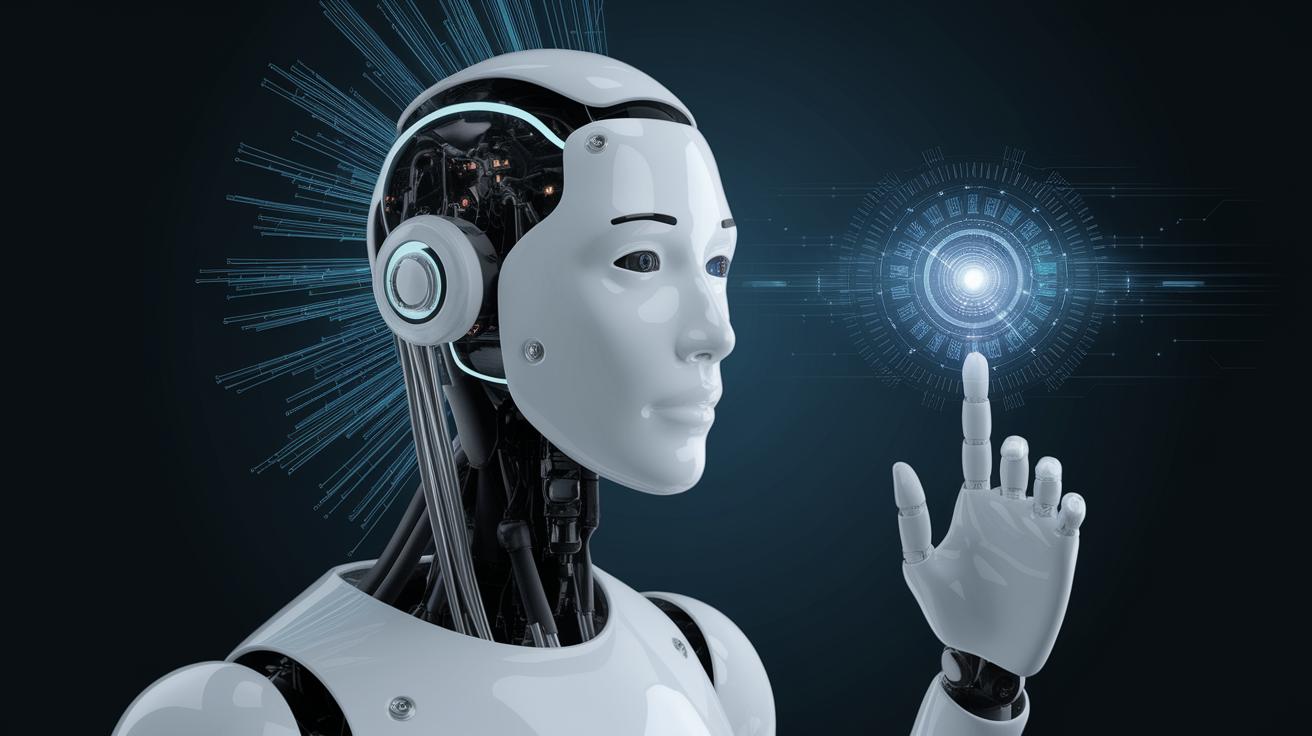The Limitations of Current AI Technologies
Artificial Intelligence (AI) has become a buzzword in today’s tech-driven world, offering promising advances that are reshaping industries from healthcare to finance. While the benefits of AI are numerous, it’s essential to acknowledge its limitations to responsibly leverage its capabilities. This blog delves into the often-overlooked challenges and limitations of current AI technologies. From understanding the basic terminology and evolution of AI to discussing its implications on education, work, and society, this article provides a comprehensive overview. Additionally, it touches on the ethical considerations and future prospects of AI, leaving readers with a synthesized understanding of where AI stands today and where it might be headed.
You are here
Welcome to a deep dive into the realm of AI technologies, where we aim to shed light on both their potential and constraints. As we navigate through the intricacies of artificial intelligence, you are encouraged to reflect on how these technologies shape our daily lives and the ethical considerations that come with them. This exploration is divided into thoughtful sections designed to enhance understanding and provoke critical thinking.
AI is progressively becoming an integral part of our existence, but to harness its potential effectively, we must first confront and comprehend its current limitations. From technical constraints to ethical dilemmas, this comprehensive guide offers not just insights but also avenues for ongoing learning and adaptation in the rapidly-evolving landscape of AI technology.
The Benefits and Limitations of Generative AI: Harvard Experts Answer Your Questions
While generative AI presents remarkable opportunities, it also brings a slew of challenges and unanswered questions. According to Harvard experts, one significant limitation is the reliance on large datasets, which are often difficult to obtain or lacking in diversity. This can lead to biased or inaccurate outputs that do not fully represent the complexity of human contexts.
Another concern is the interpretability of AI models. Understanding the rationale behind AI-driven decisions is crucial yet remains a hurdle. Generative AI often functions as a “black box,” challenging developers and users who seek to discern the underlying decision-making processes. These limitations underscore the importance of ongoing research and innovation to refine AI’s capabilities responsibly.
Understanding Artificial Intelligence (AI) Terminology
The field of AI is characterized by complex jargon that can be daunting for newcomers. “Machine Learning” refers to algorithms that allow computers to learn from data and improve over time. “Deep Learning,” a subset of machine learning, utilizes neural networks with many layers to analyze various factors of data.
“Natural Language Processing” (NLP) is another vital term that denotes the AI-driven capability to understand, interpret, and produce human language. Understanding these key terminologies is critical for grasping the nuances of AI technologies and fosters a more profound comprehension of their potential and limitations.
How have generative AI and natural language processing technologies evolved over time?
Generative AI and NLP have seen significant advancements due to increased computational power and access to extensive datasets. Early models relied on rule-based systems that were rigid and limited in capability. The emergence of neural networks and the development of transformers have since revolutionized these fields, allowing AI to generate content autonomously and comprehend nuanced linguistic patterns.
Despite these advancements, challenges persist. The models often require massive amounts of data and computing resources, making them inaccessible to smaller entities. Also, the ability of these models to truly understand context and abstract concepts remains an area where machines lag far behind human capability.
What can Generative AI do today?
Today, generative AI assists in content creation, providing tools for writing, art, and music. It can also draft legal documents, analyze market trends, and assist in product design by offering innovative solutions. AI models like GPT-3 have pushed the boundaries of creativity, generating human-like text with minimal input.
However, these applications raise new questions about originality and authorship, challenging traditional notions of intellectual property. Furthermore, while AI can produce content, it often lacks the emotional depth and contextual intelligence that humans bring to creative tasks, highlighting the importance of AI as a complementary tool rather than a replacement.
How will ChatGPT impact education, work, and society?
ChatGPT and Education
ChatGPT can transform education by offering personalized learning experiences and acting as a digital tutor, addressing individual learning needs and providing instant feedback. It holds the promise of making educational resources more accessible, especially to underserved populations.
Nonetheless, the reliance on AI in education necessitates scrutiny to ensure the quality of information delivered. Skepticism about bias and accuracy remains, necessitating the integration of AI tools with traditional teaching methodologies to create a balanced learning environment.
ChatGPT and Industry
Industries can capitalize on ChatGPT for customer service, content creation, and data analysis. It streamlines workflows and enhances productivity by automating repetitive tasks, allowing human workers to focus on complex problem-solving activities.
However, the integration of ChatGPT into industry raises concerns about job displacement and the necessity for upskilling. As AI systems take over routine tasks, the workforce must adapt by acquiring technology-focused skills to remain relevant in the evolving job market.
ChatGPT and Society
In society, ChatGPT enhances communication and could bridge language barriers, fostering global collaboration. It facilitates smoother interactions and provides support in sectors such as healthcare, where it can be used for patient inquiries and preliminary diagnostics.
Yet, its ubiquity presents ethical dilemmas concerning privacy, data security, and misinformation. The societal impact of widespread AI use demands robust governance and ethical frameworks to guide its development and implementation.
Ethical Use and Development of AI Technologies
The ethical use and development of AI hinge on transparency, accountability, and fairness. Establishing guidelines that ensure unbiased data models and inclusive AI participation is critical. This includes addressing data privacy concerns, where user information must be protected against misuse.
Efforts to create ethical AI also involve diverse perspectives, encompassing voices from different societal sectors to anticipate potential biases. Developing frameworks that prioritize ethical considerations will allow for the responsible deployment of AI that benefits humanity as a whole.
The Future of AI Technology
As AI technology progresses, its evolution will likely see enhanced human-machine collaboration, where AI tools augment human capabilities. Continuous development in AI aims at achieving more general intelligence, enhancing machines’ ability to understand context and emotions.
Looking ahead, developing sustainable AI systems involves ensuring energy-efficient processes and reducing reliance on vast data quantities. The trajectory of AI suggests a future that holds vast potential yet requires careful navigation to address ethical and societal challenges.
Related Articles
For further reading on AI, consider exploring articles that delve into specialized AI applications in healthcare, finance, and autonomous vehicles. These topics provide deeper insights into how AI is reshaping specific sectors.
Topics
Some critical AI-related topics include machine ethics, the role of AI in the gig economy, and the regulation of AI technologies. Understanding these topics enriches your comprehension of AI’s diverse landscape and multifaceted impact.
Related Courses
Machine Learning and AI with Python
This course offers foundational knowledge and practical skills for those interested in starting with AI development. It covers essential machine learning algorithms and their application using the versatile Python programming language.
Data Privacy and Technology
Understanding data privacy is critical in the age of AI. This course explores the ethical and legal aspects of data protection, equipping learners to navigate AI’s landscape responsibly and ethically.
Data Science: R Basics
For those inclined towards data science, this course offers an introduction to data manipulation and analysis using R. It’s an excellent starting point for individuals looking to enhance their analytical capabilities in a data-driven world.
Summary of main points
| Section | Key Points |
|---|---|
| You are here | Introduction to AI limitations, importance of understanding current state. |
| Benefits and Limitations | Generative AI prospects and challenges, interpretability issues. |
| AI Terminology | Key terms include ML, Deep Learning, NLP, vital for understanding AI scope. |
| Evolution of AI Technologies | Growth from rule-based to neural networks, data and computing challenges. |
| Capabilities of Generative AI | Applications in content creation, challenges of originality and depth. |
| Impact of ChatGPT | Educational transformation, industry efficiency, societal integration. |
| Ethical Use and Development | Necessity for transparency, addressing bias and privacy concerns. |
| Future of AI | Human-machine collaboration, efficiency, ethical considerations. |
| Related Courses | Courses in ML, Data Privacy, Data Science for skill enhancement. |


